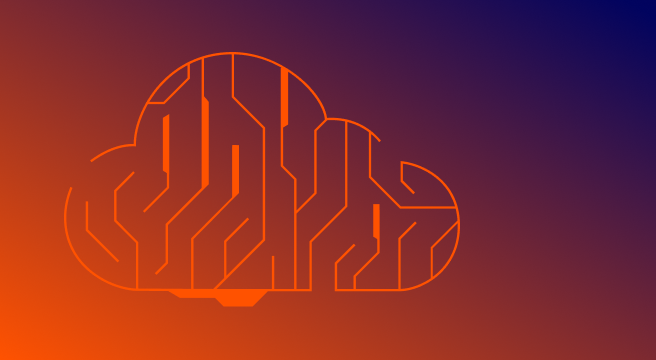How DSPM reduces cloud data risk
Published | August 8, 2025 |
Visibility, exposure and remediation
Attackers exploit misconfigurations, excessive permissions and hidden shadow data to create dangerous exposure paths. While cloud security posture management (CSPM) secures infrastructure and cloud infrastructure entitlement management (CIEM) manages identities, data security posture management (DSPM) focuses explicitly on the sensitive data itself. DSPM cuts through the complexity of data security by providing live visibility, real-world context, and prioritized actions. DSPM empowers you to focus on and fix what matters, directly protecting your critical data assets before threat actors exploit vulnerabilities.
Expose key concepts
- Pinpoint and eliminate hidden cloud data risks
- Data exposure: The real cloud risk
- Visibility into what matters most
- Mapping toxic combinations
- Prioritizing exposure with business context
- Fixing what puts data at risk
- How DSPM aligns security, privacy and cloud teams
- DSPM as part of your exposure management strategy
- DSPM resources
- DSPM products
Pinpoint and eliminate hidden cloud data risks
In cloud environments, your teams can easily (and accidentally) expose sensitive data, like customer records, personal health information (PHI), source code and business IP, with misconfigurations, over-permissioned identities or lack of visibility.
Data security posture management (DSPM) directly addresses this problem.
By combining continuous discovery, contextual access analysis and risk modeling, DSPM gives your team a live map of your cloud data risk, so you can fix what matters before attackers find it.
This guide explains how DSPM reduces data exposure risk and why it’s essential for cloud-native security.
Data exposure: The real cloud risk
In dynamic cloud environments, sensitive data constantly moves and changes. Users or systems may copy data into unapproved SaaS tools, store it in misconfigured buckets or allow access for third-party services you didn’t authorize.
Traditional tools lack the continuous, cloud-native visibility to detect these hidden exposure paths, leaving sensitive data unmonitored and at risk.
DSPM helps reduce cloud data risk by answering three key questions:
- Where is your sensitive data?
- Who or what has access to it?
- Is that access appropriate or risky?
When users or systems expose data, through identity issues or cloud misconfigurations, DSPM surfaces those risks, along with the context your team needs to take action.
Learn how DSPM use cases like breach prevention, least privilege and DevSecOps integration support proactive risk management.
Visibility into what matters most
The first step in reducing data exposure is knowing where your sensitive data lives.
DSPM platforms like Tenable DSPM automatically discover and classify sensitive data across AWS, Azure, GCP and SaaS platforms.
It includes:
- Structured and unstructured data
- Shadow data in unmanaged services
- Regulated data types like personally identifiable information (PII), protected health information (PHI) and financial data
- Other sensitive data based on your business needs
Once your DSPM tool discovers these data types, DSPM overlays access policies and service relationships to reveal how users and systems use that data, where it flows and its potential exposures.
Mapping toxic combinations
Visibility into your data alone isn’t enough. You need to understand how data exposure could occur.
DSPM uses exposure graphs to model risk in real-world context and maps relationships between:
- Sensitive data sets
- Over-permissioned users or service accounts
- Cloud misconfigurations (e.g., public buckets, open ports)
- Weak or absent encryption
These "toxic combinations" form actual attack paths. DSPM highlights where attackers could chain misconfigurations and identity weaknesses to reach sensitive data. It’s a risk-based model that moves beyond static alerts.
The Tenable 2025 Cloud Security Risk Report highlights that 29% of organizations have at least one "toxic cloud trilogy,” a publicly exposed, critically vulnerable and highly privileged cloud workload. It also found that 9% of publicly accessible cloud-storage resources have sensitive data, with 97% of that data labeled as restricted or confidential.
Prioritizing exposure with business context
Rather than flood teams with low-severity findings, DSPM prioritizes risks based on real exposure, sensitivity and business impact.
For example:
- Public S3 bucket with test data = low risk
- Public S3 bucket with production customer data = critical risk
DSPM ties technical exposure to what matters, so your team knows where to act first.
By combining data classification, access mapping and context-aware scoring, DSPM enables true risk-based prioritization.
Fixing what puts data at risk
Reducing cloud data risk requires more than visibility. You need action.
DSPM supports remediation with prescriptive, contextual guidance that helps you tackle the most common security gaps:
- Revoking or adjusting excessive permissions when someone has more access than they actually need
- Encrypting unprotected data in your cloud environment
- Restricting public access to misconfigured buckets that might accidentally expose your sensitive data
- Removing shadow data from unapproved services that people in your organization are probably using without anyone knowing about it
The best DSPM tools integrate with your cloud platforms and CIEM solutions to automate response where possible, closing exposure gaps before attackers exploit them.
How DSPM aligns security, privacy and cloud teams
Cloud data protection affects compliance, privacy and DevOps. DSPM gives each team the insights they need: security sees toxic access paths; privacy teams get sensitive data inventories and DevOps receives actionable misconfiguration alerts.
By aligning teams around shared data risk, DSPM helps reduce silos, improve response and enforce governance at scale.
DSPM as part of your exposure management strategy
DSPM does not replace CSPM, CIEM or data loss prevention (DLP). Instead, it is a critical enhancement to your exposure management program.
While CSPM secures the infrastructure where data resides, and CIEM secures the identities that access it, DSPM focuses specifically on the data footprint. It bridges the gap by showing how infrastructure misconfigurations (CSPM findings) and excessive identity permissions (CIEM findings) directly impact sensitive data, an insight often overlooked by traditional tools.
When CSPM, CIEM, and DSPM work together, you get a unified view spanning cloud posture, entitlements and data risk. This integrated approach helps you discover misconfigurations and over-permissioned identities and, crucially, map where sensitive data resides, who can access it and how toxic exposure pathways might form.
You create context-rich exposure graphs by combining continuous data discovery and classification with entitlement modeling and misconfiguration checks. These expose toxic combinations that alone might not trigger high alerts, but together form a serious risk.
Rather than flagging every misconfigured resource, this integrated approach assesses risk based on data sensitivity, access privileges and business relevance. It means your team acts first on exposures that matter, helping prevent data breaches and supporting compliance efforts.
Guided, contextual remediation is at the core of modern exposure management. With this setup, teams receive precise instructions, revoke privileges, encrypt storage, close access paths and can often automate fixes through CIEM or CSPM capabilities for rapid, consistent response.
By fusing CSPM, CIEM and DSPM, you build a modern exposure management framework that provides full-spectrum visibility and control. It allows you to detect, prioritize and remediate real-world cloud data risks so your organization can shrink its attack surface and stay ahead of breaches.
See how Tenable Cloud Security uses DSPM to reduce cloud data risk across multi-cloud environments.
DSPM resources
DSPM products
Cybersecurity news you can use
- Tenable Cloud Security
- Tenable One

